MOTORING
Honda Amaze: Making a case for small sedans
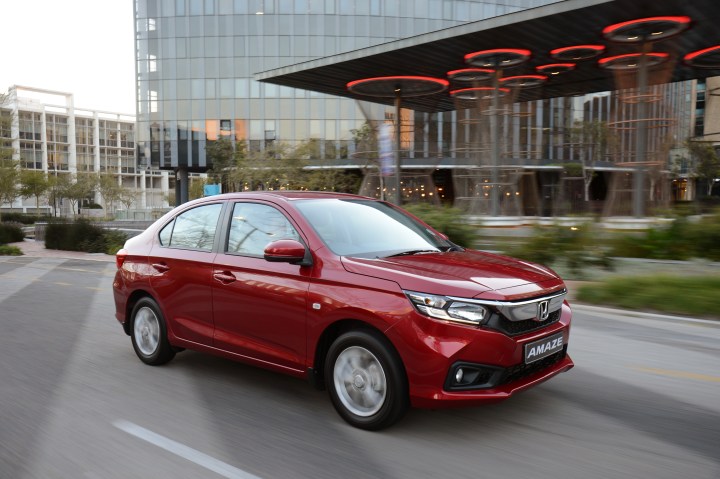
There’s nothing particularly amazing about the new Honda Amaze. It’s a small sedan, designed and developed in Southeast Asia, and built in India. But with keen pricing, low running costs, loads of spec and a fair-sized boot, it might just become a sales hit in South Africa, too.
It’s no secret that South Africans motorists are buying down. More specifically, that they are being forced to buy down as the economic noose continues to tighten.
For car makers producing smaller, affordable models, that trend could translate into more sales. Sub-R200,000 cars are in the volume spotlight, as the likes of the Renault Kwid and the Datsun Go are already proving.
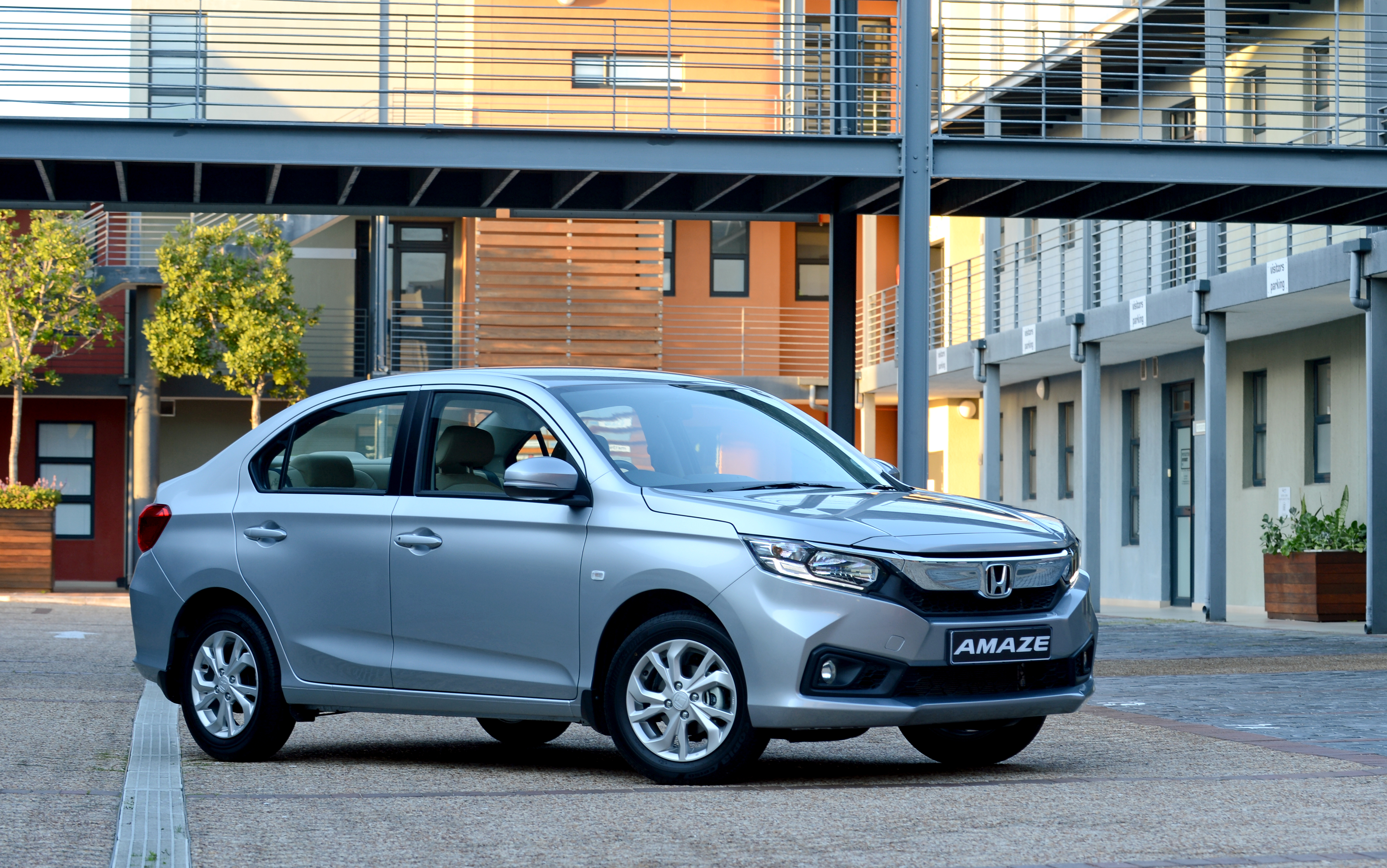
Let’s be clear: South Africans love their cars — and with good reason. Unlike developed-world citizens, we don’t have access to an affordable, reliable, safe public transport system. And we expect even entry-level models to cover long distances.
So, owning and driving a car is visible, tangible proof of achieving independence and mobility — of having arrived. And the purchase decision entails a lot more than comparing specs and prices.
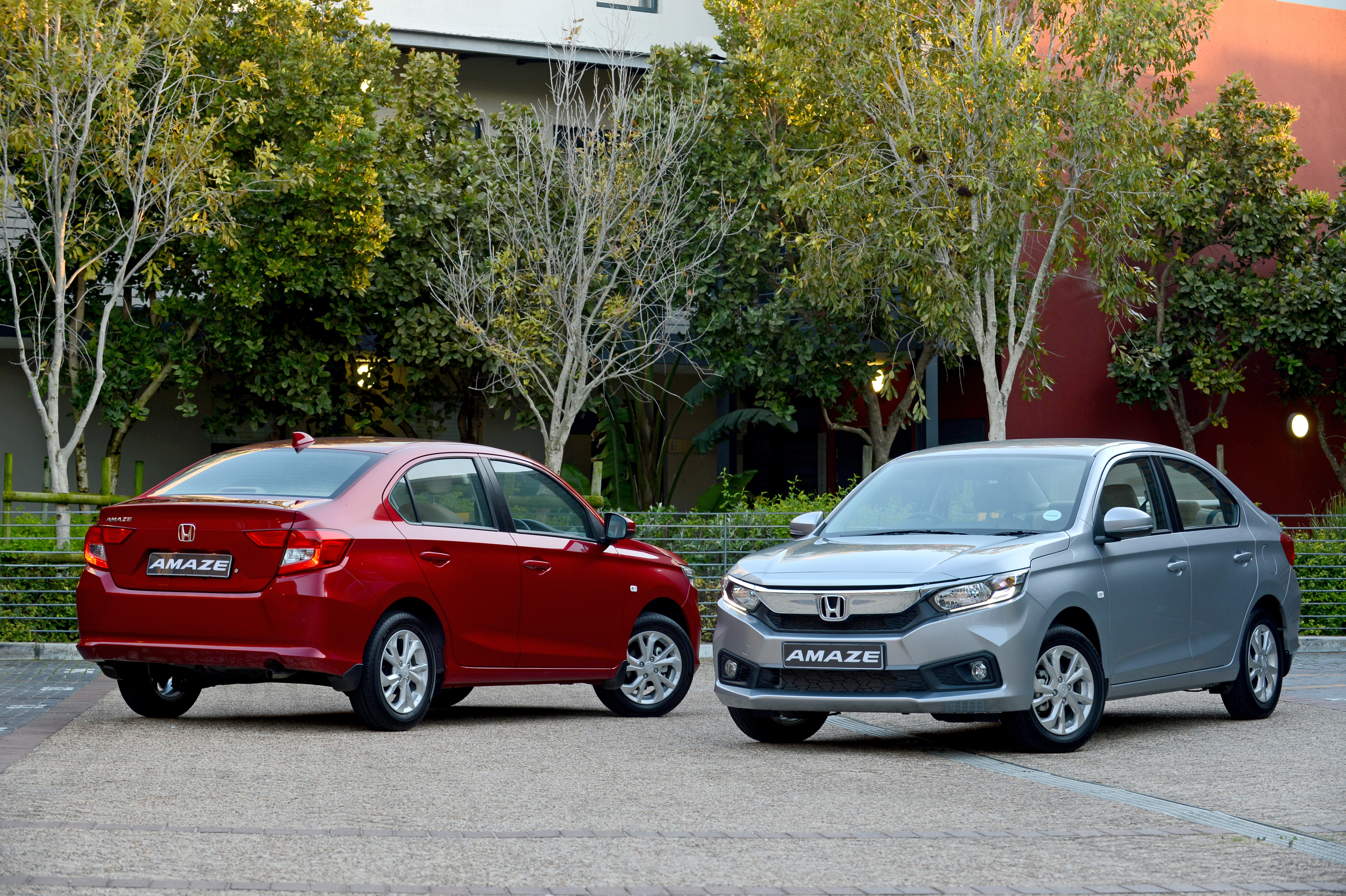
This means that car makers here have to add desirability to their mix of model attributes — easy if you’re talking supercars or luxury machines, but not so simple if affordability is the single most important drawcard.
Which brings us to the Honda Amaze — a blunt-faced but otherwise surprisingly streamlined small sedan that its maker hopes will attract a new and broader-based target audience to the marque.
Honda has traditionally enjoyed something of a privileged status among Japanese car brands in SA, harking back to the days when its models were marketed and retailed side by side with Mercedes-Benz.

Today’s millennials won’t remember it, but there was a time, back in the 1980s and ’90s, when the Honda Ballade was considered a junior Benz, and the Honda brand was seen as a cut above its larger (and better selling) Japanese rivals.
Today, Honda is a proudly independent organisation in SA, with its own national dealer network and an array of models stretching from the red-hot (and rare) Civic Type R superhatch and the luxurious CR-V SUV to, well, more affordable machinery — like the Amaze.

So, what’s so amazing about the Amaze? Nothing much, really — and that’s the problem with catchy nameplates meant to add marketing zest. They create expectations which, quite frankly, burden the actual product, and unfairly so.
There’s enough to recommend the Amaze without needing to resort to such tactics. Let’s start with a design that, for once, is dedicated to the small sedan art, instead of merely tacking on a boot to an existing hatchback.
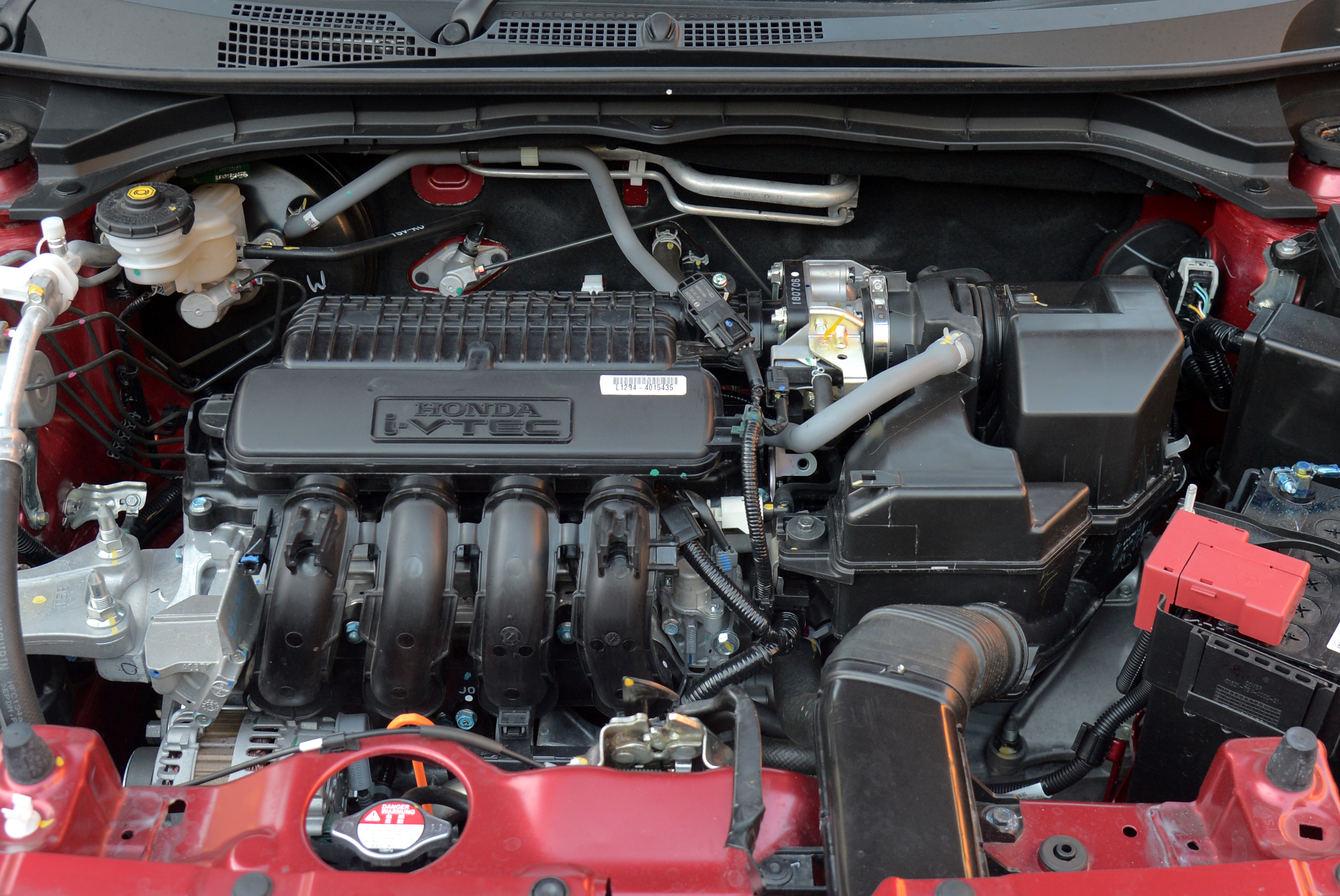
That used to be case with the newcomer’s Brio hatch-based predecessor. But the replacement is a far more convincing, more cohesive effort.
Aesthetic appeal is subjective at best, and for some the blunt, bold front end of the Amaze will exude just the right mix of individuality and aggression. To me, the slab of chrome should belong to something bigger than this small sedan — but it does underscore the Honda identity.
If the front is probing and angular, then the rest of the shape is quite the opposite, flowing almost gracefully from the raked windscreen across a smoothly contoured roofline to a short, high and tidy deck.
Add some artfully sculpted flanks and a crisply creased shoulder line, and the word handsome comes readily to mind.
Some of the detailing varies, depending on model: for instance, fog lamps and body-coloured mirrors and door handles are the preserve of the Comfort models, while the entry-level Trend makes do with contrasting black finishes. But both versions feature 15-inch alloy wheels.
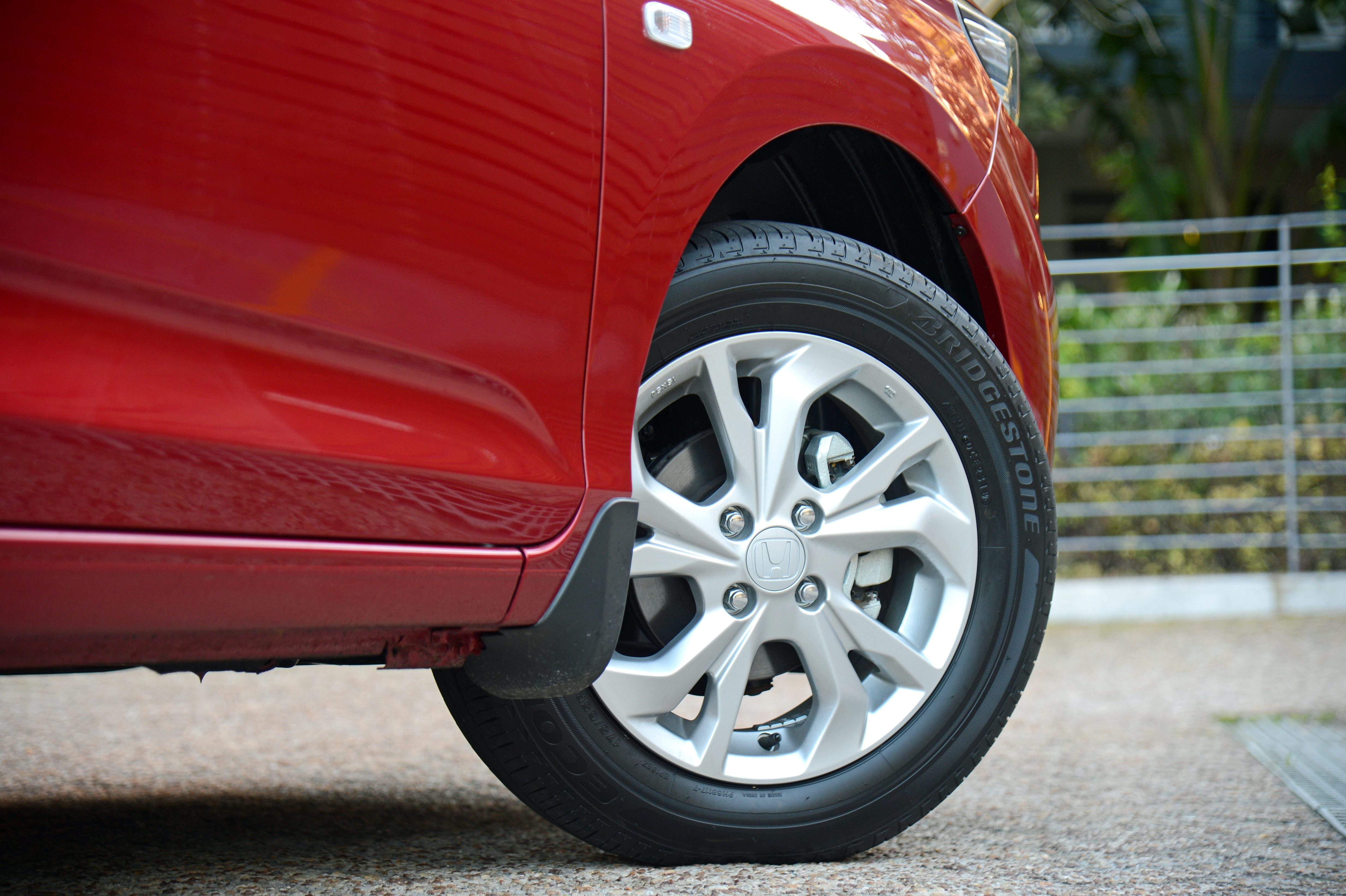
The cabin is likely to polarise opinion even more: the primarily light tan interior is typical of India-sourced cars, but doesn’t resonate well with local buyers, who prefer smarter (and more practical) darker finishes.
The dashboard is a half-and-half affair, with the upper portion dressed in charcoal plastic, while the lower section echoes the caramel-coloured cloth upholstery of the seats. The same goes for the door panels.
It might look fine when fresh and new, but it’s likely to be a magnet for grime once in use. Honda’s answer is an optional synthetic leather seat covering which is applied over the existing upholstery as a no-cost option.
The two-tone covers combine black and tan sections, and also add some welcome padding. The overall effect is more elegant and durable than the standard upholstery, even if the seats end up looking (and feeling) a little bulkier.
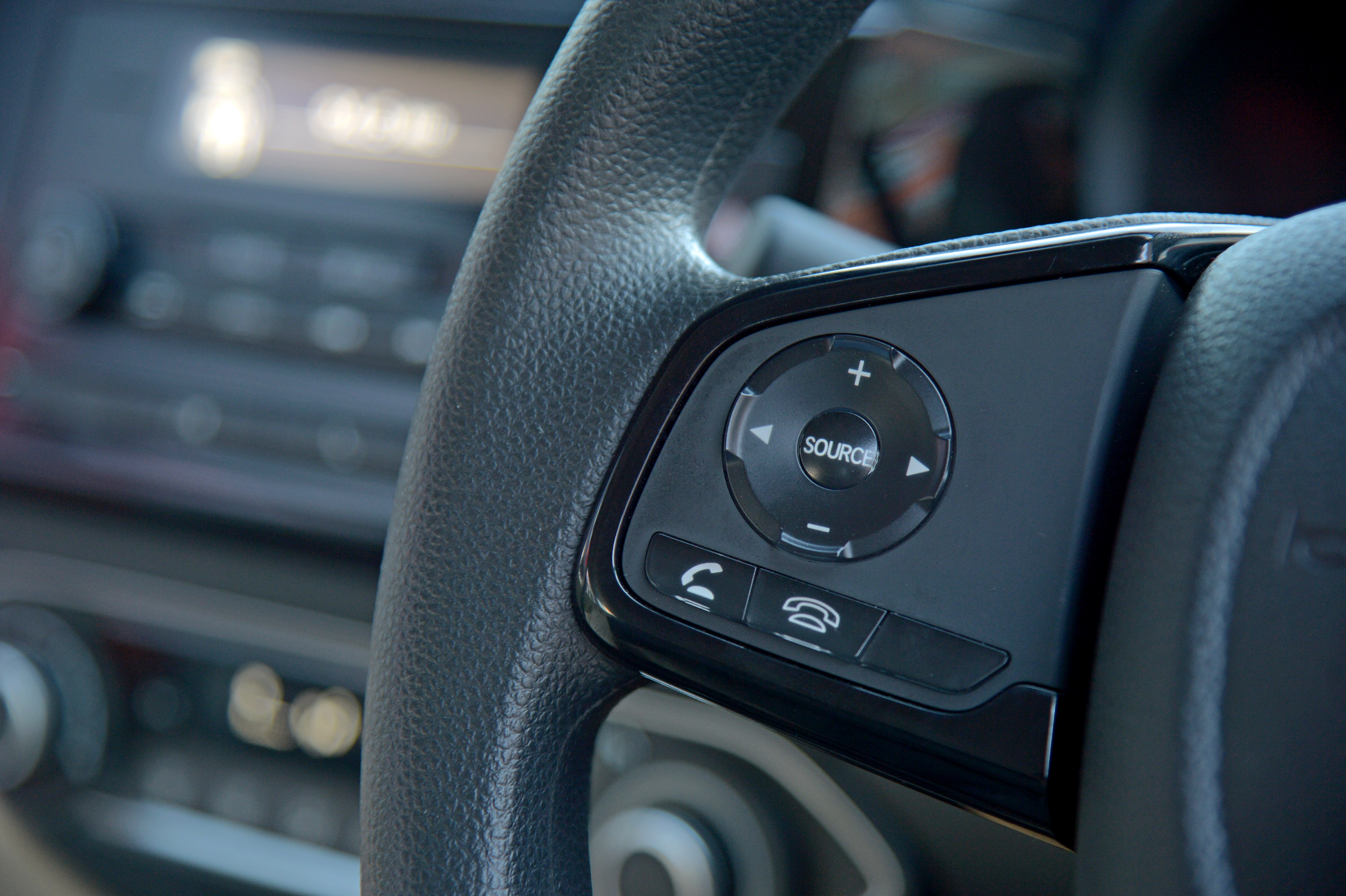
Black gloss detailing on the dashboard attempts to infuse some extra sophistication, but looks a little out of place in this otherwise honest and pragmatic setting.
Perhaps more important is the cabin’s roominess, created by an extended wheelbase and wider tracks, together with intelligent packaging. For a small sedan, the sense of space is admirable, and while you wouldn’t call the rear legroom generous, it certainly exceeds expectations.
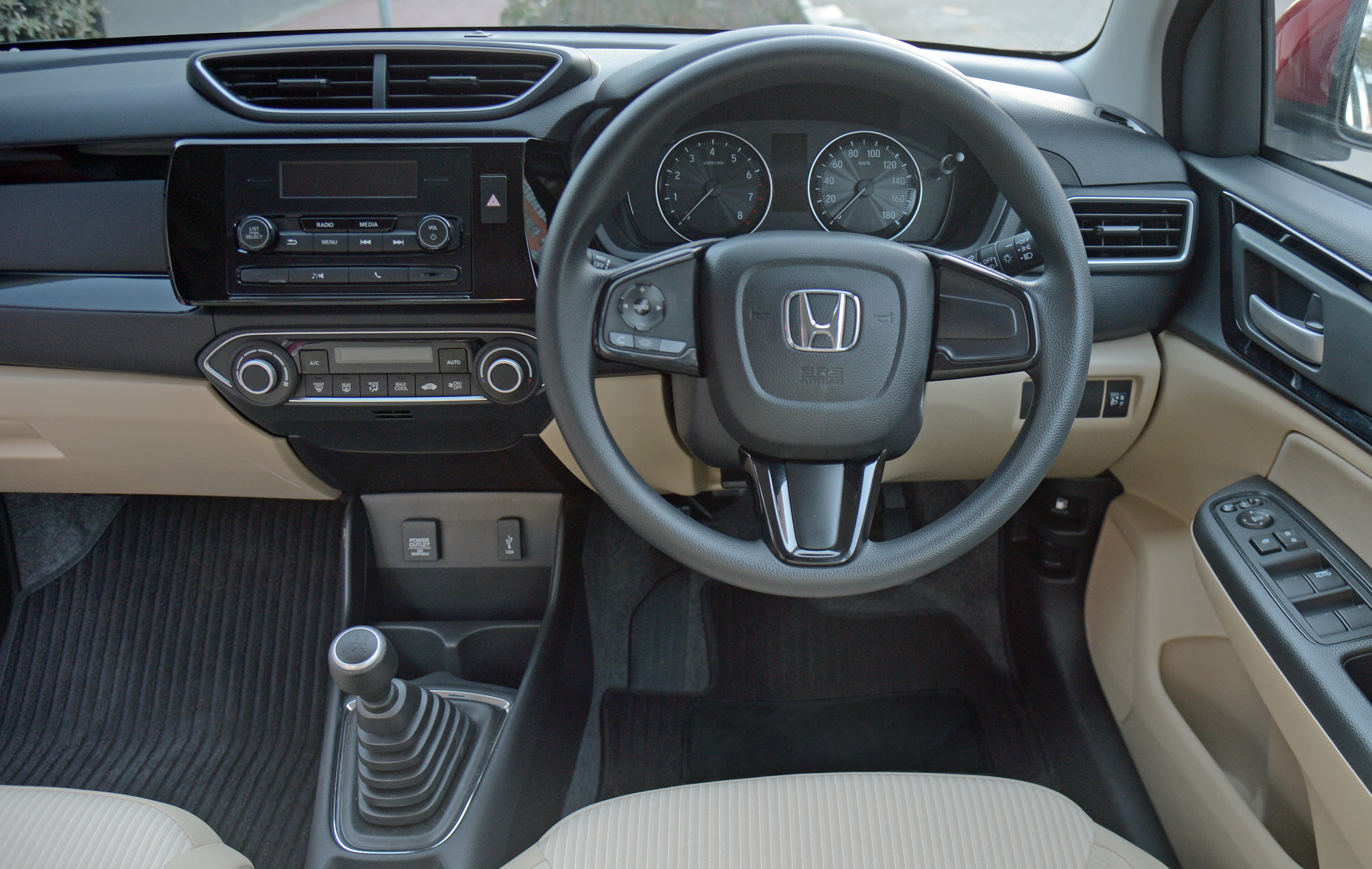
That also goes for a 420-litre boot that is deeper and more accommodating than expected — something likely to be appreciated by family buyers. The boot is secure too, as the rear seat doesn’t fold flat to extend luggage space.
As for standard kit, the Amaze’s value proposition is a strong one. The more affordable Trend offers electric windows, remote central locking, and a multifunction steering wheel.
There’s also four-speaker audio with FM/AM radio, Bluetooth, USB and MP3 capability, as well as air-con and full instrumentation, including a digital trip computer. Amazing? Pretty much.
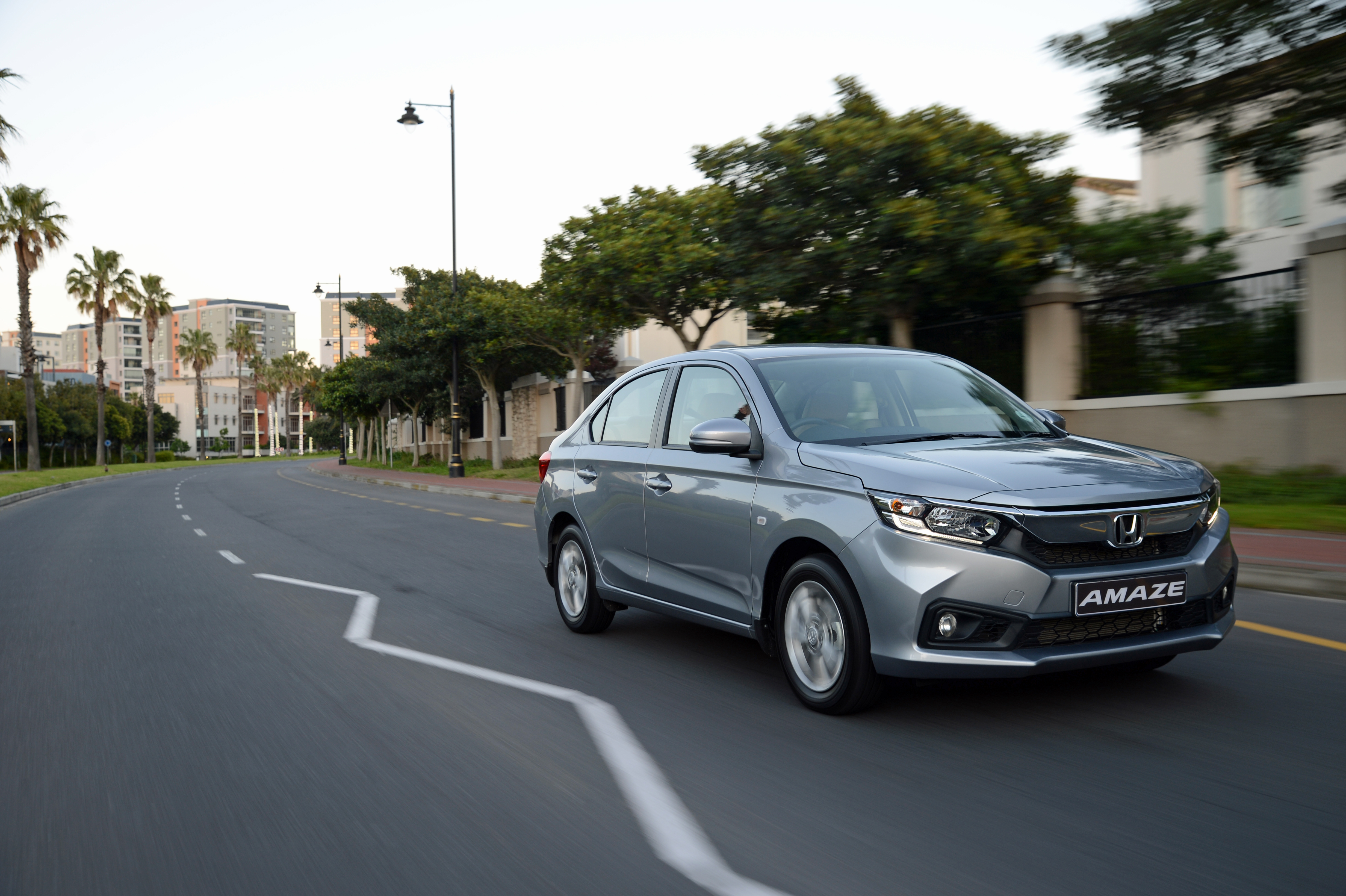
Moving up to the Comfort models adds electric mirrors and full-auto climate control, as well as auto door locking — but that’s it. One could therefore argue that the Trend offers the stronger value proposition.
Since buying entry-level often entails cutting back on safety, it’s also good to know that all Amaze models feature ABS brakes with electronic brake force distribution, and dual airbags.
But let’s get to the real stuff: what does the Amaze feel like to drive? While it’s larger than its predecessor, the newcomer is lighter and stiffer, promising enhanced road manners, improved refinement, and sprightlier performance.
The 1.2-litre four-cylinder engine seems up to the task, delivering 66kW of muscle and 110Nm of twist to propel less than 950kg of car. However, it’s not quite as simple, thanks to the gearbox options.
Both Trend and Comfort versions come with a five-speed manual gearbox as standard. But Comfort buyers can also opt for a Continuously Variable Transmission (CVT).
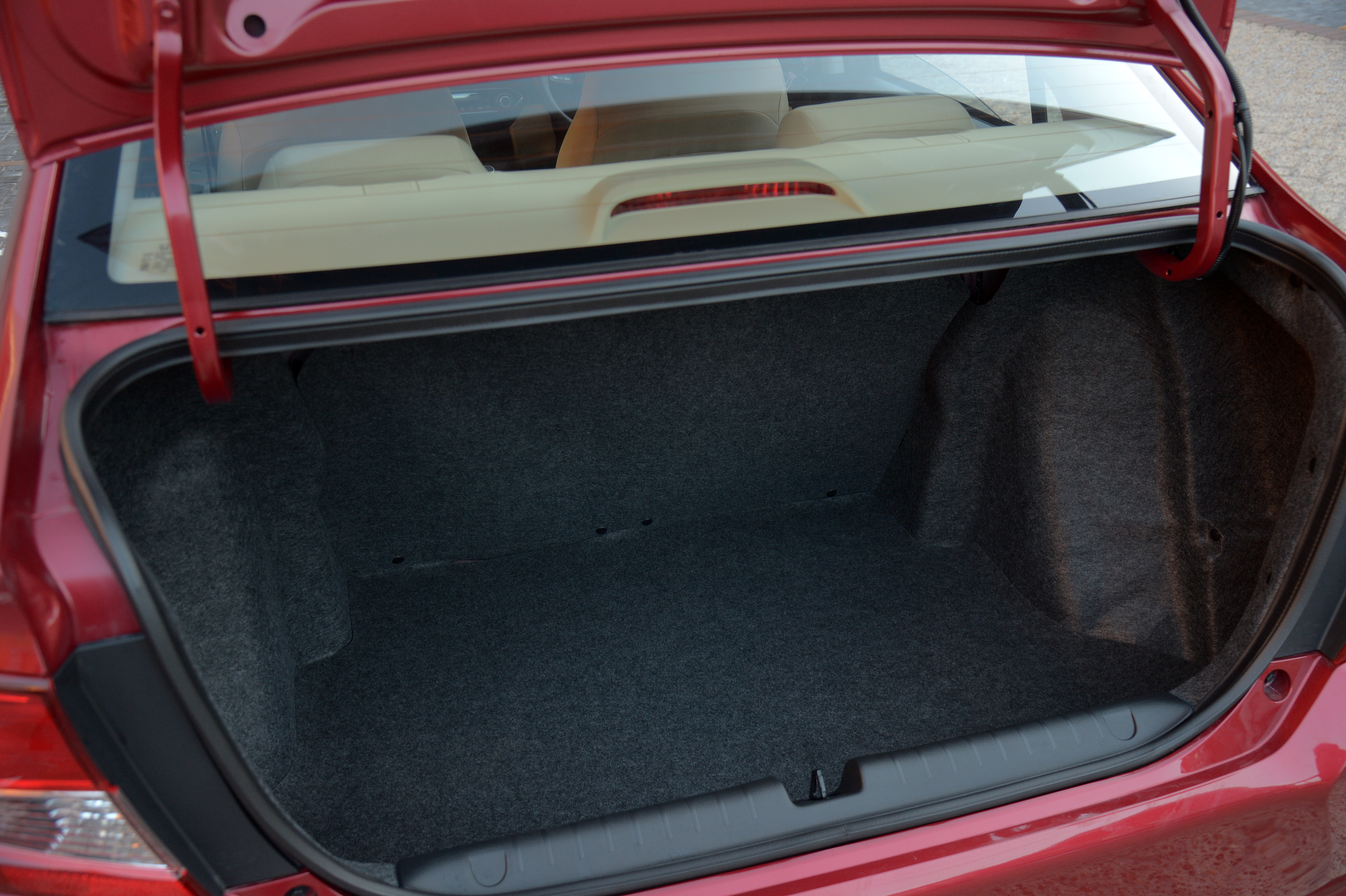
Like conventional automatic gearboxes, CVTs allow gear changes without the need for a clutch. But they don’t have actual gears, seamlessly providing the ideal effective gear ratio for any operating conditions.
CVTs are lighter and more fuel efficient than auto or manual gearboxes. The downside is the dreaded rubber band effect: the engine always seems to be labouring more than it should, as if it’s suffering from a clutch that’s slipping — and that’s particularly prevalent here.
Yes, progress is brisk enough. And you can use the shift paddles behind the steering wheel to select ‘virtual’ gears, which does address the rubber band effect to some extent.
However, the five-speed manual is a better match for the engine, making for friskier responses and generally more incisive, engaging driving. The growing number of budget car buyers wanting an auto car, however, will want to opt for the CVT.
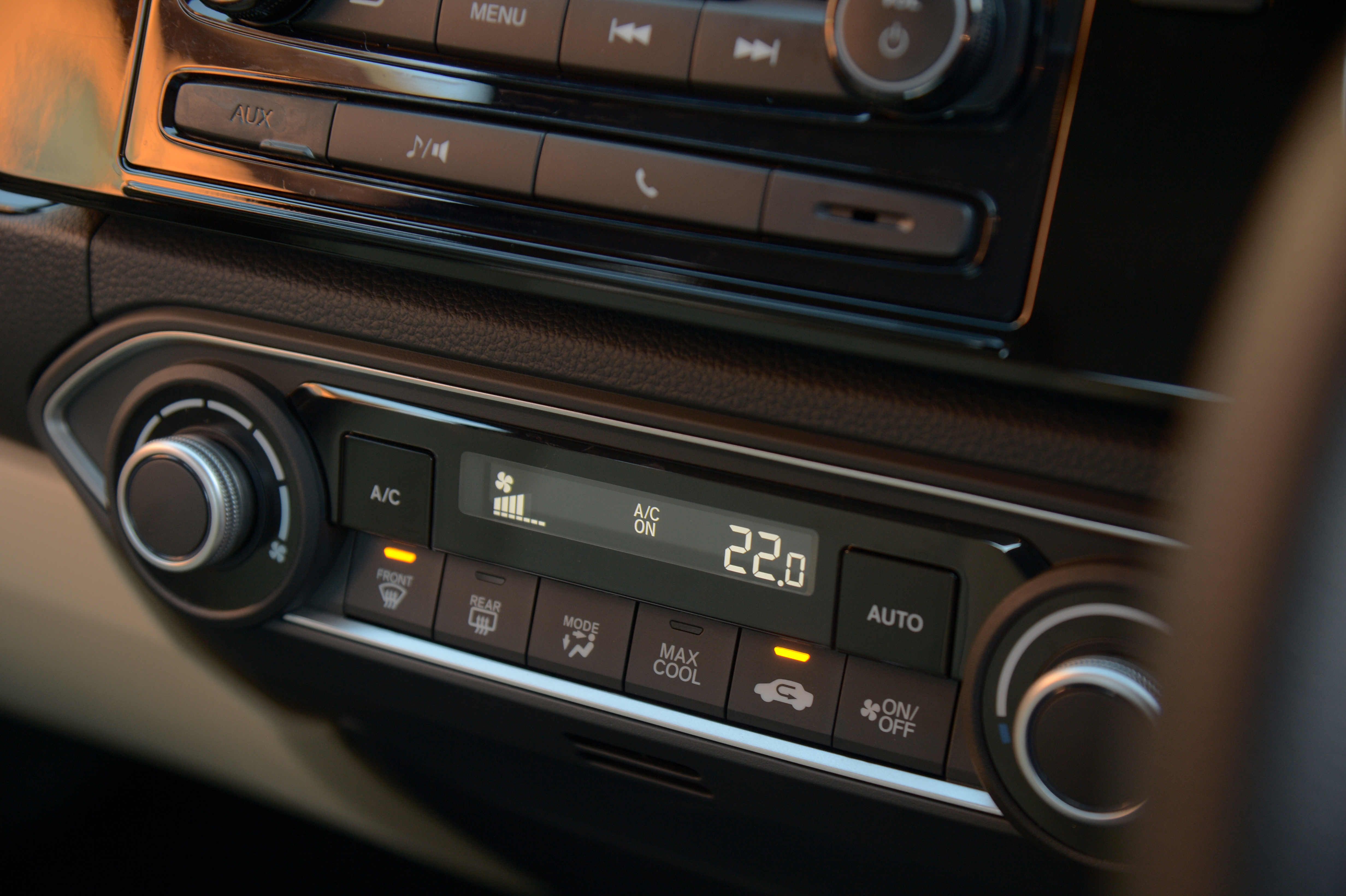
Regardless of gearbox, the Amaze is easy and fuss-free to drive. The steering is over-assisted, and the steering response is on the slow side, but none of that gets in the way of piloting the little Honda.
It offers a pretty decent ride, too, with lots of damping taking care of road irregularities, but enough poise to keep it on track in corners. Both cars I drove seemed to suffer from more wind and road noise than expected, though.
Honda is bullish about the Amaze’s sales prospects, targeting everyone from young families to empty nesters and retirees. It should be a popular fleet and rental option, too.
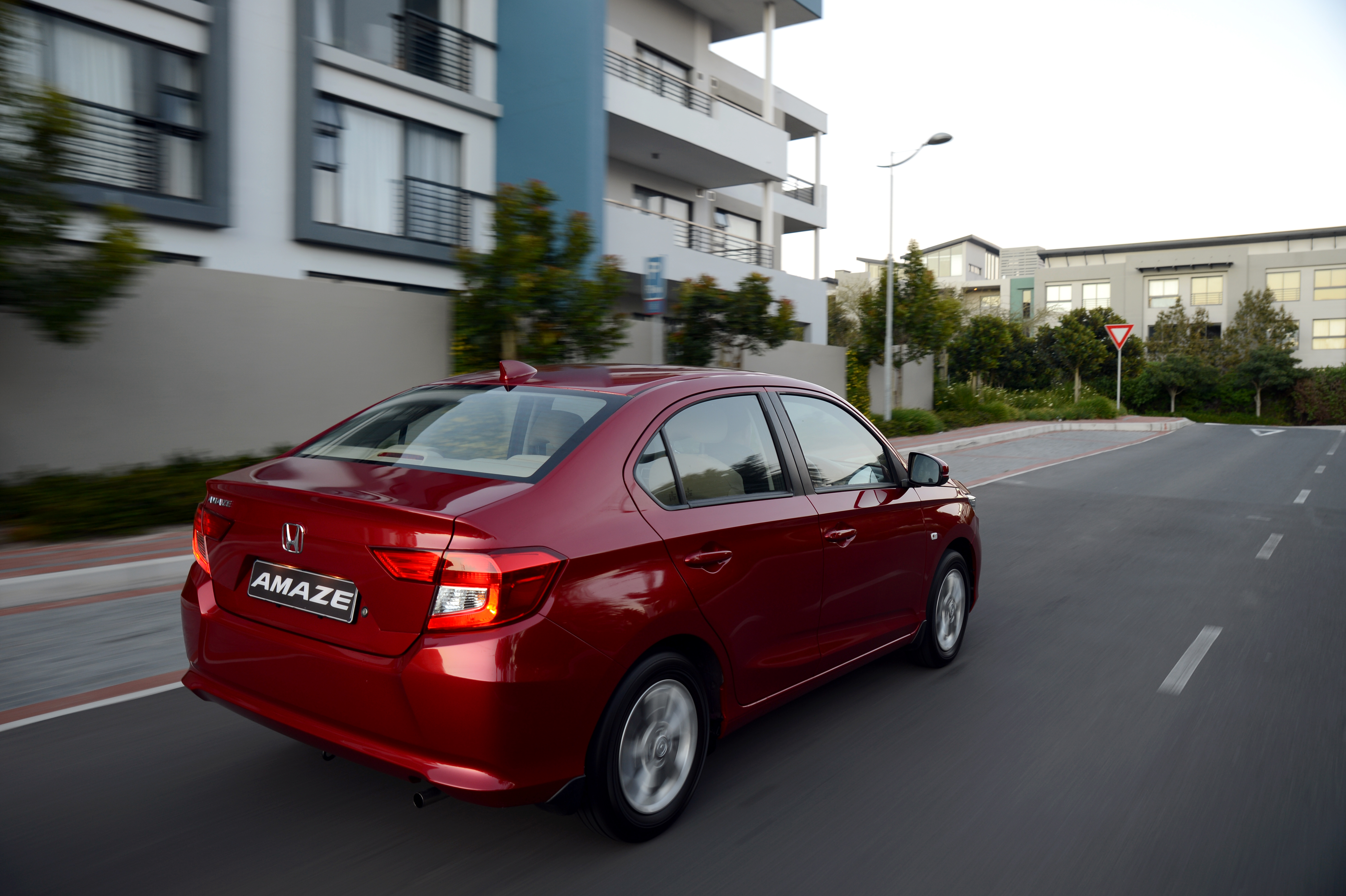
But it’s by no means the only contender in the small sedan battle: Suzuki’s Swift-based Dzire is a tempting and well-executed rival, as is the more powerful Ford Figo Sedan.
However, the Amaze appeals in terms of overall package and value — especially the so-called entry-level 1.2 Trend, which does offer impressive (or is that Amazing?) bang for the buck. DM
PRICING
Honda Amaze 1.2 Trend: R179,900
Honda Amaze 1.2 Comfort: R193,900
Honda Amaze 1.2 Comfort CVT: R208,900
















 Become an Insider
Become an Insider